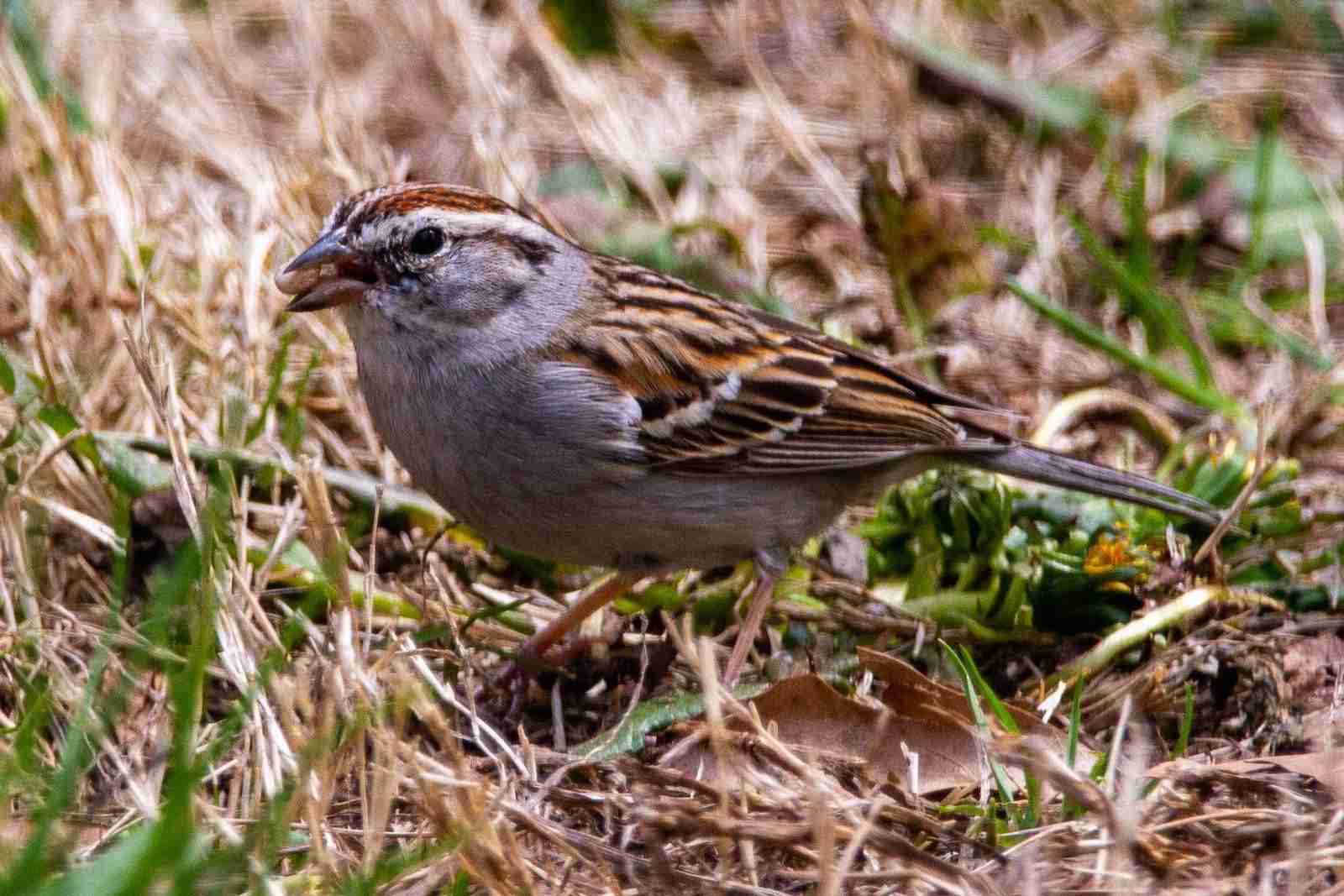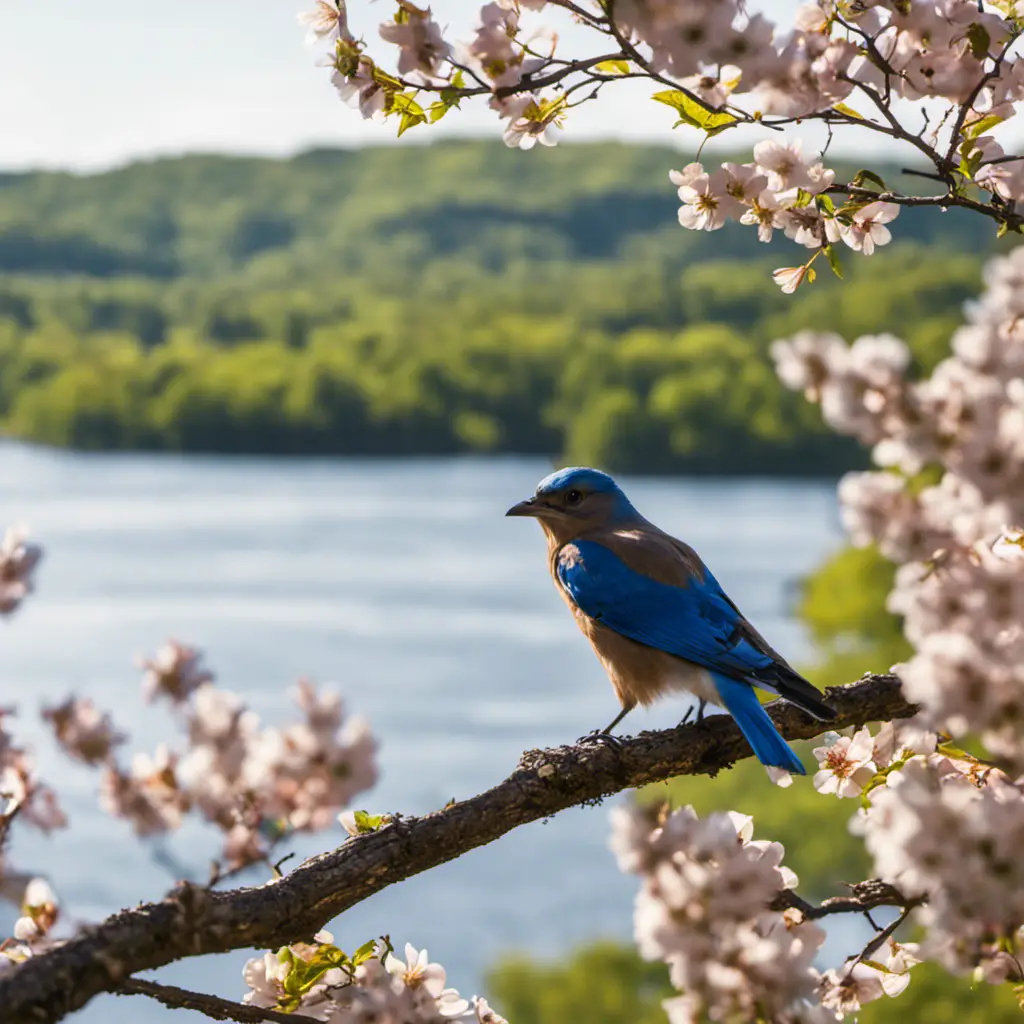We’ll go over the most common owls in South Dakota, complete with pictures and important information. Only reliable sources were used to gather this data, which was then double-checked with an ornithologist.
If you’re a bird enthusiast, South Dakota is the place for you! This state is home to over 400 different species of birds. From the American Bald Eagle to the tiny hummingbird, there’s something for everyone. In this blog post, we will take a closer look at some of the most common birds in South Dakota, as well as some of the more unique species. So put on your binoculars and get ready for an adventure!
Backyard Birds of South Dakota
Dark-eyed Junco
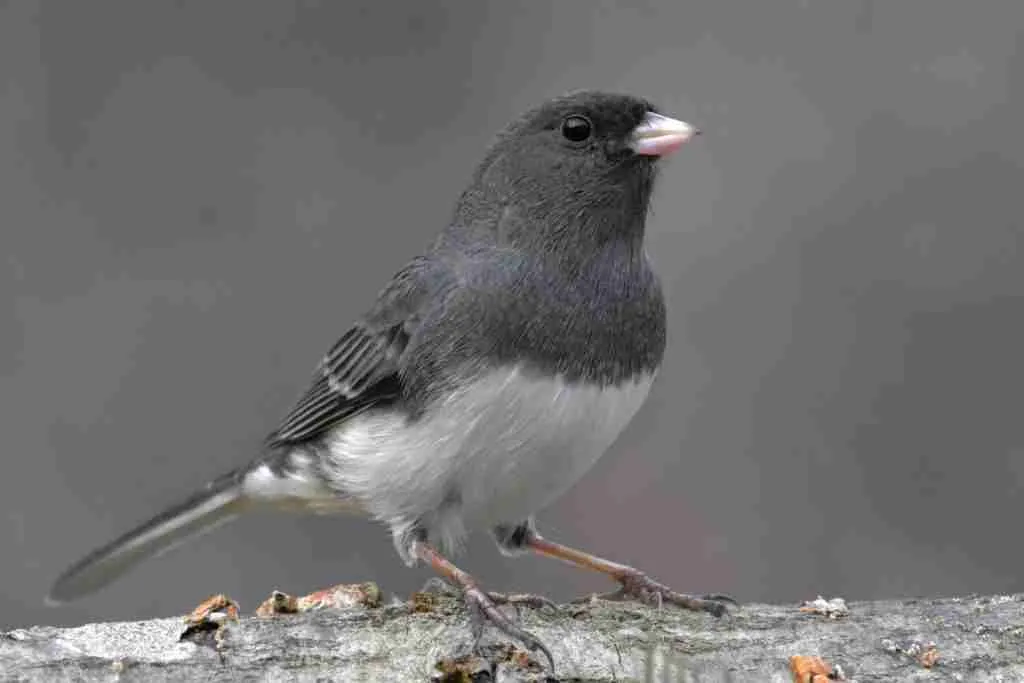
(Junco hyemalis) is a small sparrow with a slate-gray back and white belly. The juncos are the largest genus in the family Emberizidae. This bird is common across North America, especially in Canada and the United States. They are also known as “snow birds” because they often come south in the winter. The Dark-eyed Junco is a seed eater, but will also eat insects. These birds are usually found in forests, but can also be found in gardens and parks.
They build their nests in trees or bushes. The male and female juncos look alike, but the males have a darker heads than the females. The best time to see these birds is in the spring and summer. That is when they are breeding and nesting. If you want to attract them to your yard, put out a bird feeder with seed or suet.
You can also put out a birdbath for them to drink from and take a bath. These birds are not afraid of humans, so you can get close to them. Just be careful not to scare them away.

European Starlings
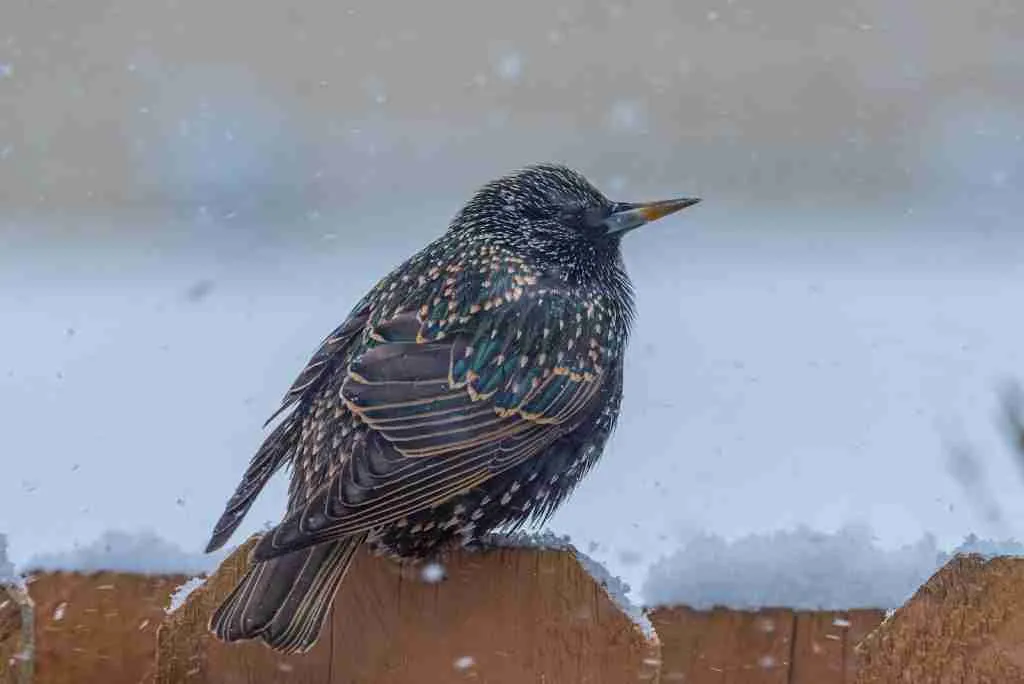
European Starlings are small to medium-sized birds. They have black plumage with iridescent feathers on their backs and wings. The males usually have brighter plumage than the females.
These birds are found in woodlands, gardens, farmland, and urban areas. Their diet consists of insects, berries, and fruits. European Starlings are known for their aggressive behavior and their ability to mimic sounds.
They are also known to damage crops and buildings. These birds are a nuisance to many people, but they are still protected under the Migratory Bird Treaty Act.

American Goldfinch
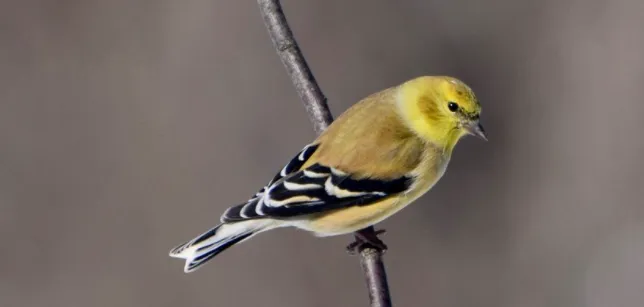
The American goldfinch, also known as the eastern goldfinch or wild canary, is a small North American bird in the finch family. It is migratory, spending summers in much of Canada and the northern United States, and winters in the southern United States, Mexico, and Central America. Breeding adult males have a bright yellow head, black face and throat, and a white belly.
Their wings are dark with two bars, and their tail is forked. Females look similar but are paler overall and have a grayish wash on their wings. Juveniles are duller versions of adult females. This bird measures about 12 cm (up to five inches) in length and weighs about 20 grams.
The American goldfinch feeds primarily on seeds, especially thistle seeds. They also eat insects, especially in the summer months. These birds are often seen in flocks feeding on the ground or in trees. They will also visit bird feeders.
The American goldfinch nests in trees, laying three to five eggs in a nest made of plant material, down, and hair. The female incubates the eggs for about two weeks. The young birds leave the nest after about two weeks.

Downy Woodpecker
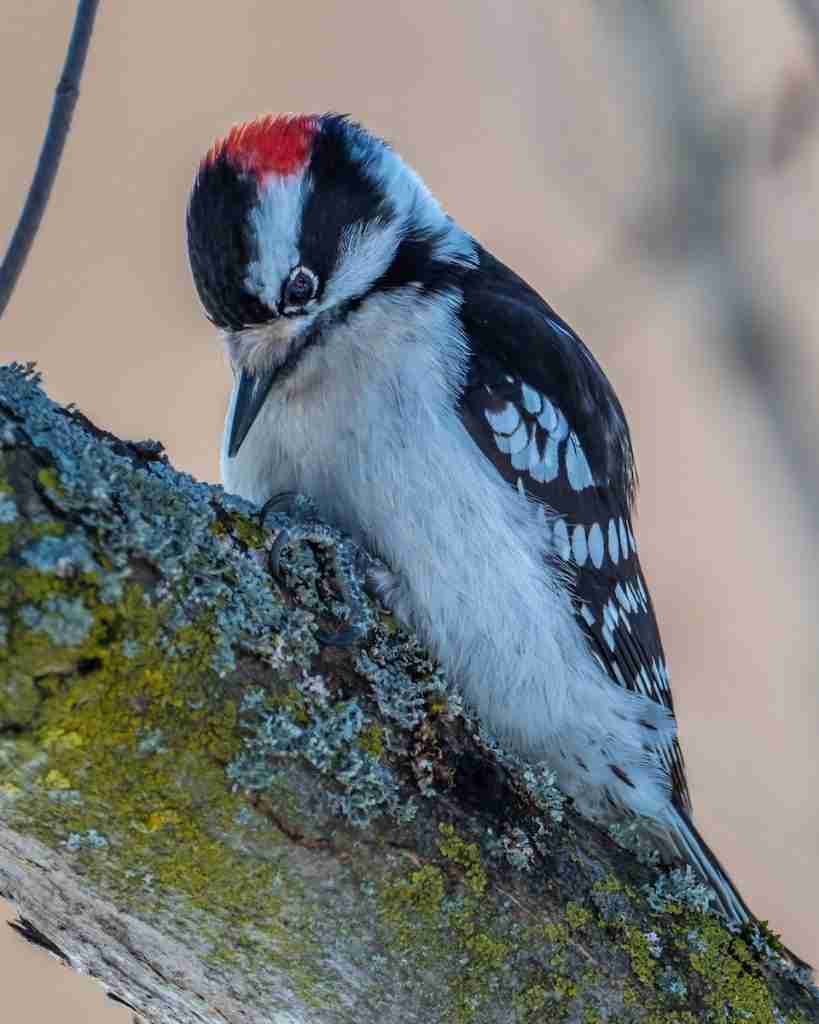
(Picoides pubescens) is the smallest woodpecker in North America. The downy woodpecker has a black and white zebra like back, with a small black bib. They have a white underbelly with some spotting on their sides. The wings are black with white bars.
Adult males have a red patch on the back of their heads, while females have a white patch. Juveniles look like adults but with duller colors. The downy woodpecker is about six to seven inches in length with a wingspan of ten inches. They generally weigh between one and two ounces.
The downy woodpecker’s diet consists mostly of insects. They will also eat spiders, fruit, and berries. The downy woodpecker is found in woods across North America. They are year-round residents of South Dakota. The downy woodpecker is a cavity nester. Both sexes will excavate their own nesting cavity or use an existing one. The female will lay four to eight eggs in the cavity. The downy woodpecker is a noisy bird.
They make a loud tapping sound as they drill for insects or as they drum on trees or metal objects. They will also make a high-pitched “churr” sound. The downy woodpecker is active during the day and can be seen climbing tree trunks and branches in search of food. They are also known to feed on the ground. The downy woodpecker is a non-migratory bird.

American Robin
(Turdus migratorius)
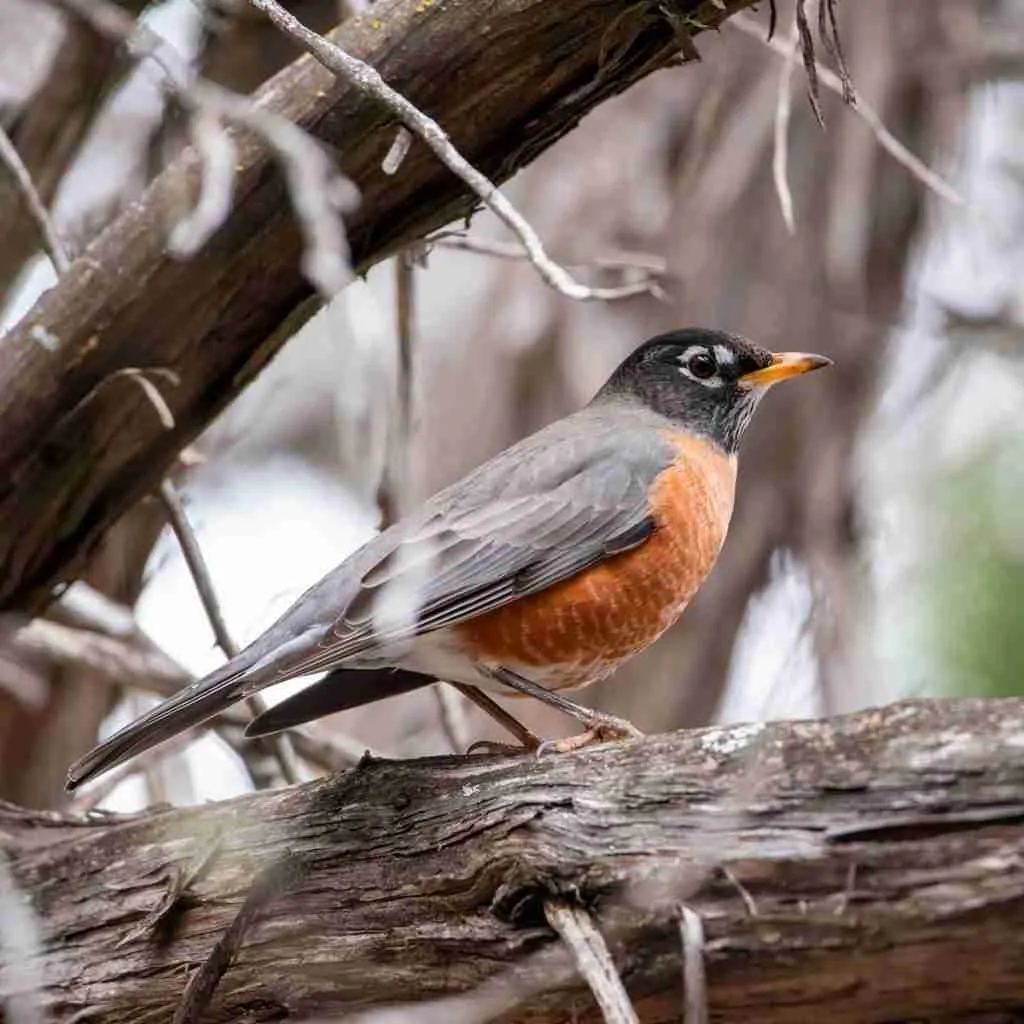
The American robin is a plump bird with a reddish breast and belly. The back and head are grey and the wings are black with white stripes. This bird is about 12-14 inches long with a wingspan of about 16-20 inches. It has a strong, slightly curved bill. The legs and feet are dark greys.
Both sexes look alike, but juveniles have browner feathers.
American robins are found in woodlands, gardens, parks, and open fields across North America. They prefer areas with trees nearby for nesting and roosting. These birds are most active at dawn and dusk but can also be seen foraging during the day.
The diet of the American robin consists mostly of insects and earthworms which they find by sight while foraging on the ground. They will also eat berries and fruits. In winter, their diet shifts to include more fruits as insects become scarce.
American robins are social birds and often travel in flocks. During the breeding season, they are territorial and will defend their nesting area from other robins. The nest is a cup of grass, twigs, leaves, and paper placed in a tree or shrub about 12 feet off the ground.
Both parents help to incubate the eggs (usually between three and five), which hatch after about two weeks. The chicks are altricial, meaning they are born naked and helpless. Both parents feed the young birds until they are ready to leave the nest, which is usually about four weeks after hatching.

Mourning Doves
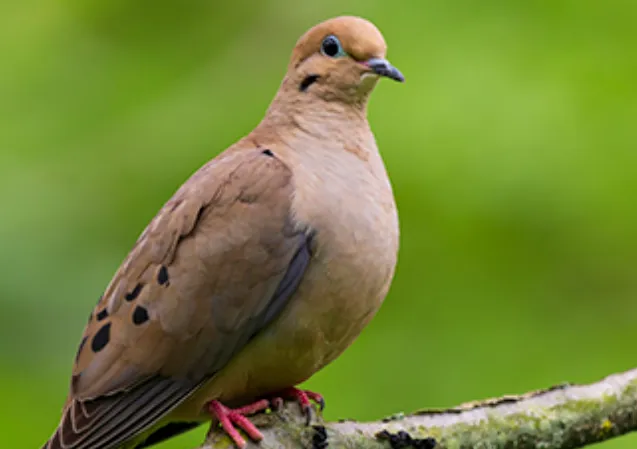
Mourning Doves are one of the most common backyard birds across North America. They are easily identified by their long, pointed tails and small, round heads. Mourning Doves are a grayish-brown color with dark spots on their wings. The males and females look alike. These doves get their name from their mournful cooing sound.
Mourning Doves are seed eaters and prefer black oil sunflower seeds. They will also eat cracked corn, millet, and wheat. You can attract them to your backyard by providing a feeder with one of these types of seeds.
Mourning Doves are medium-sized birds. They are about 12 inches long from head to tail and have a wingspan of about 17 inches.
Mourning Doves live in open areas like fields, prairies, and gardens. They are also common around farms where there are grain fields.

Eastern Kingbird

Eastern Kingbird is a small blackbird with a large head and bill. Males have a white breast and belly, while females are paler overall. These birds breed in open habitats across North America east of the Rocky Mountains. Their diet consists mainly of insects, which they capture by perching on exposed branches and flying out to catch prey in midair. In winter, they move to the southern United States and Mexico. Kingbirds are aggressive toward other birds, often chasing away much larger species such as crows and hawks.
The Eastern kingbird is a small blackbird with a large head and bill. The males have a white breasts and belly, while the females are paler overall. They breed in open habitats across North America east of the Rocky Mountains.
Their diet consists mainly of insects, which they capture by perching on exposed branches and flying out to catch prey in midair. In winter, they move to the southern United States and Mexico. Kingbirds are aggressive toward other birds, often chasing away much larger species such as crows and hawks.
The Eastern Kingbird is a small blackbird measuring about seven to eight inches in length. The male has a white breast and belly with black feathers on the back, head, and wings. The female is paler overall with some gray mixed in among the black feathers. Both sexes have large heads and bills.

Black-capped Chickadees
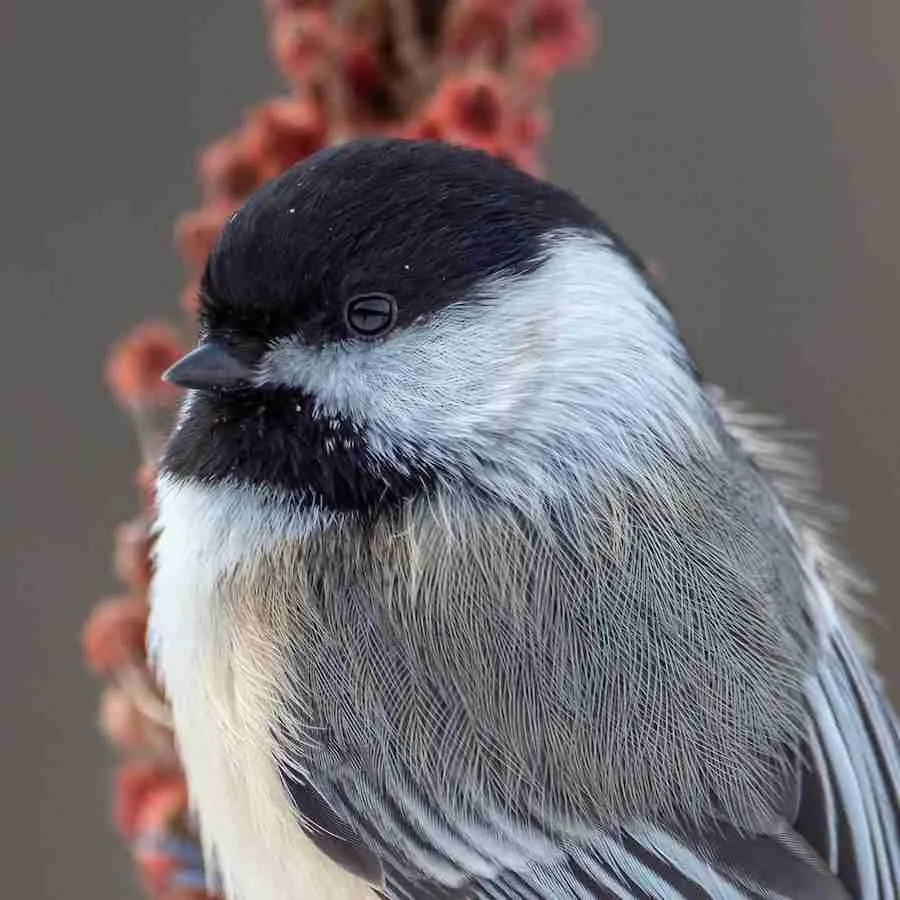
Black capped Chickadees are small birds with blackheads and white cheeks. They have a wingspan of about nine inches and weigh only one ounce. Chickadees are found in wooded areas across North America. They eat insects, seeds, and nuts. Chickadees are known for their friendly behavior towards humans.
They will often land on people’s outstretched hands to eat. Chickadees are also known for their ‘chick-a-dee’ call. This is a warning call that they give to other chickadees when they see a predator. Chickadees are interesting birds and are fun to watch.

Common Grackle
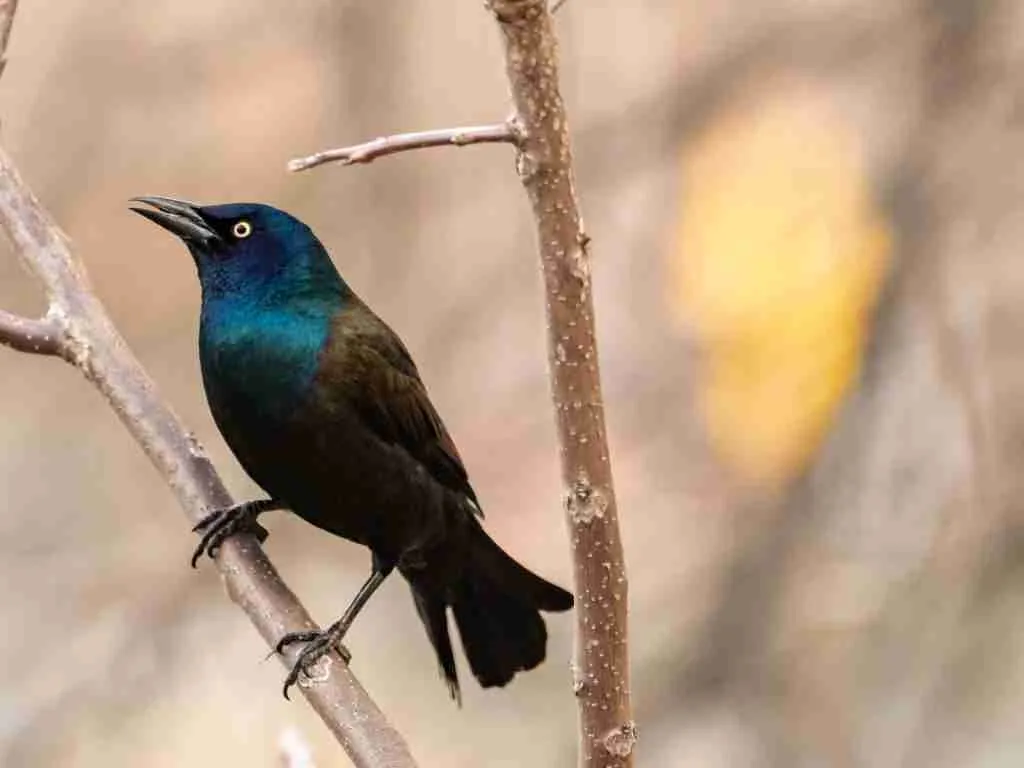
The Common Grackle is a species of bird in the family Icteridae. The adult male has black plumage with a purple or green sheen and yellow eyes. It is about 18 cm long and weighs 50-70 grams. The adult female has dark brown plumage. Both sexes have long tails and yellowish eyes.
The Common Grackle is found in North and South America. Its diet consists of insects, spiders, small vertebrates, and fruits. It prefers to live in open habitats such as woods, fields, and marshes. The Common Grackle is a social bird that often forms flocks of up to 100 individuals. It is known for its loud, harsh calls.

Red-winged Blackbird
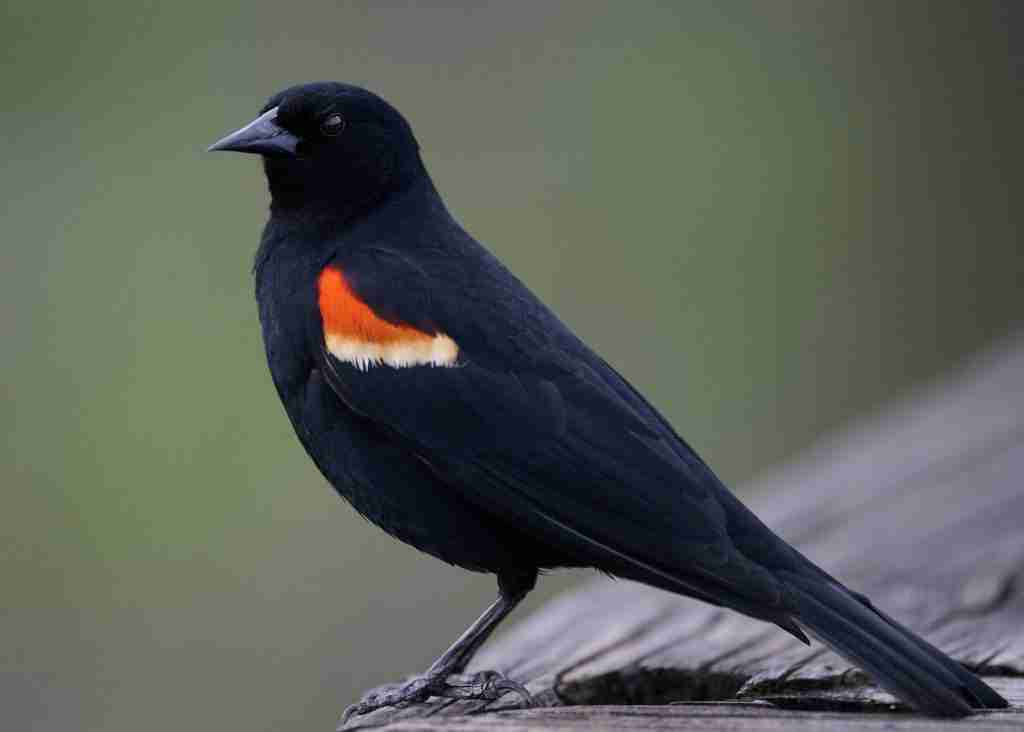
(Agelaius phoeniceus) is a species of true blackbird in the family Icteridae. The red-winged blackbird is sexually dimorphic: males have all-black plumage with a small area of red on each wing, while females are mostly dark gray with some brownish tints and little or no red on their wings. Both sexes have yellow eyes. Males sing a loud, rich song often described as o-ka-lay or o-ca-lee.
This characteristic call is given throughout the day during the breeding season, which typically lasts from late February to early August in North America.
The red-winged blackbird is a native of North America. It breeds in marshes from Alaska and Canada to the Gulf of Mexico and Central America, spending the winter in southern states and Central America. The red-winged blackbird is a small bird, with a length of 15–20 cm (59–79 in) and a wingspan of 25–30 cm (98–118 in). Males and females look alike, with black plumage and yellow eyes. The red-winged blackbird is an omnivorous bird, eating a variety of insects, spiders, frogs, reptiles, fruits, and seeds.
The red-winged blackbird is a social bird that often forms large flocks during the breeding season. These flocks can number in the hundreds of thousands of birds. The red-winged blackbird is a territorial bird, with males defending their territories from other males. Females build nests in marshes, often near the water’s edge.

Barn Swallows

Barn Swallows are the most widespread swallow in the world. They are easily identified by their long, deeply forked tails and dark blue upper parts with rusty foreheads. Their underparts are pale grayish-white. Barn Swallows typically eat flying insects, which they catch in mid-air. They often build their nests on man-made structures, such as barns, bridges, and culverts.
The barn swallow is a migratory bird, meaning that it spends the winter in warmer climates and returns to its breeding ground in the spring. In North America, barn swallows typically breed in Canada and the northern United States. They spend the winter months in Central and South America.

Western Meadowlark
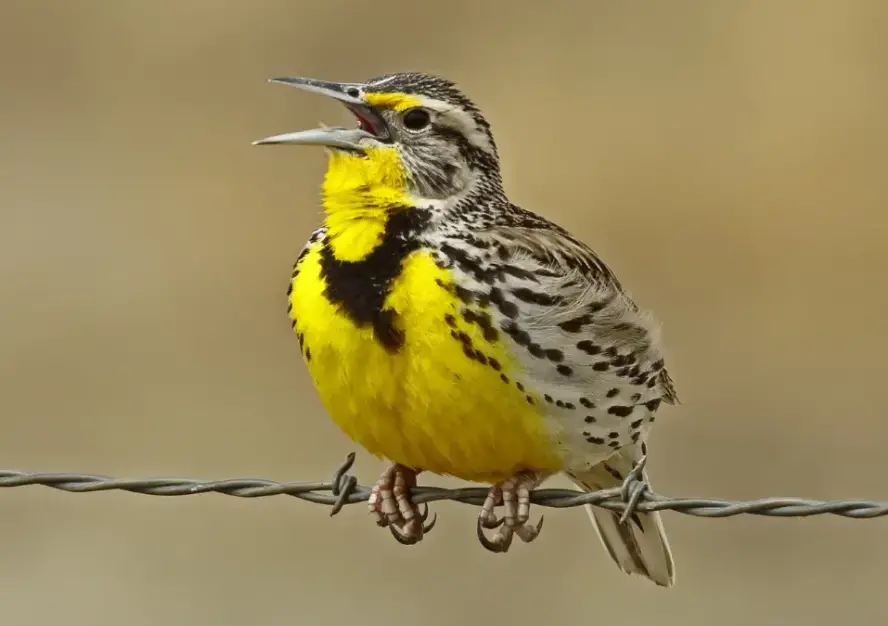
The Western Meadowlark is a medium-sized songbird with a long, pointed tail. It has olive brown wings with yellowish streaks on its back and wings. Its underparts are pale with dark streaks. The Western Meadowlark typically eats insects and seeds. It often nests in grasslands and open fields.
The bird above is a Western Meadowlark. To identify this bird, look for its brown upperparts with yellowish streaks, long pointed tails, and pale underparts with dark streaks. This bird typically eats insects and seeds and is often found in grasslands and open fields.

House Wren
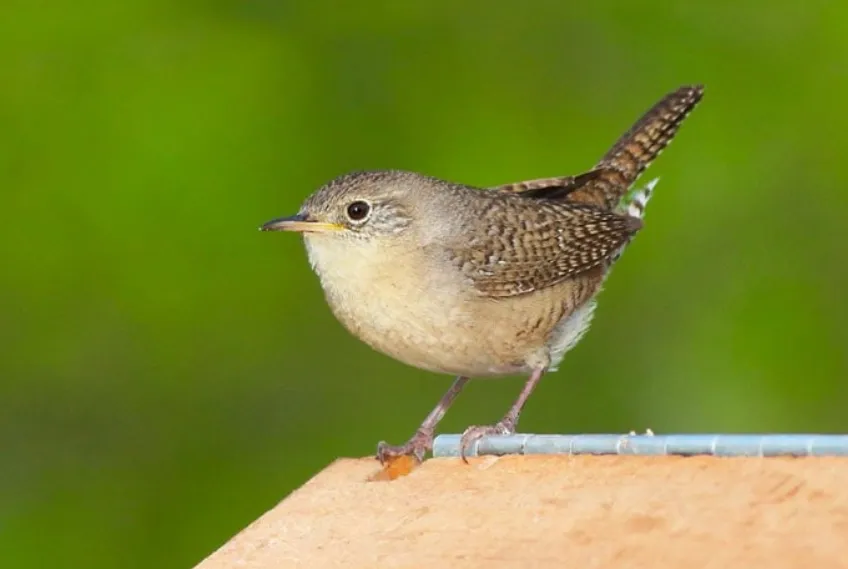
House Wrens are small songbirds with rounded bodies and long tails. They have brown upper parts with white or pale gray underparts. Their eyes are dark and their bill is thin and pointed.
Male House Wrens often build several nests in one season and will fiercely defend their territory from other males. These birds can be found in woods, gardens, and parks. They eat insects, spiders, and other small invertebrates.
The House Wren is a small bird, measuring between five and six inches in length. The bird has brown upper parts with white or pale gray underparts. The eyes of the House Wren are dark and the bill is thin and pointed.
The male House Wren often builds several nests in one season and will fiercely defend his territory from other males. The House Wren can be found in woods, gardens, and parks. The bird eats insects, spiders, and other small invertebrates.

Brown-headed Cowbird
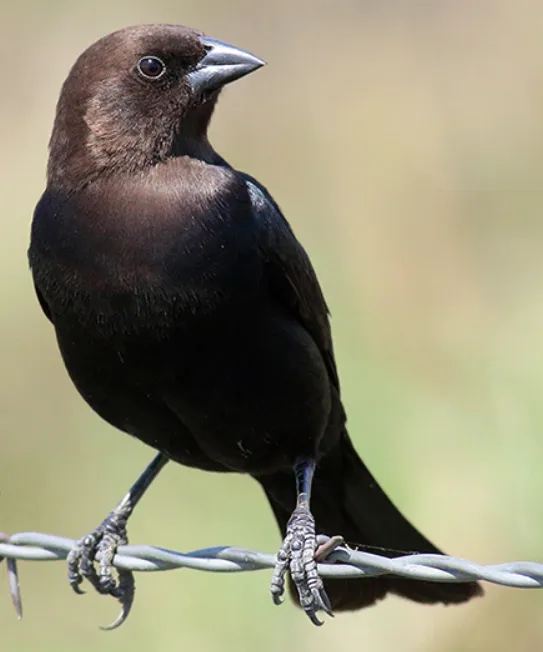
Brown-headed Cowbird eggs are small and white with brown spots. The female cowbird will lay her eggs in the nests of other birds, such as the American Goldfinch, and leave them to be raised by the foster parents. Cowbirds are not particular about their habitat and can be found in open woodlands, fields, or even backyards.
Although they will visit bird feeders, they are more likely to be found foraging on the ground for insects. Cowbirds are social birds and often travel in flocks. They are also known to follow other animals, such as cattle, in search of food. Although their numbers have declined in recent years, the Brown-headed Cowbird is still one of the most common birds in North America.
The Brown-headed Cowbird is a small, black bird with a brown head. Adults are about seven inches long and weigh one ounce. The male and female look alike, but the female is usually a little smaller than the male. Juvenile cowbirds are grayish-brown and have spots on their wings and tail.

Chipping Sparrow
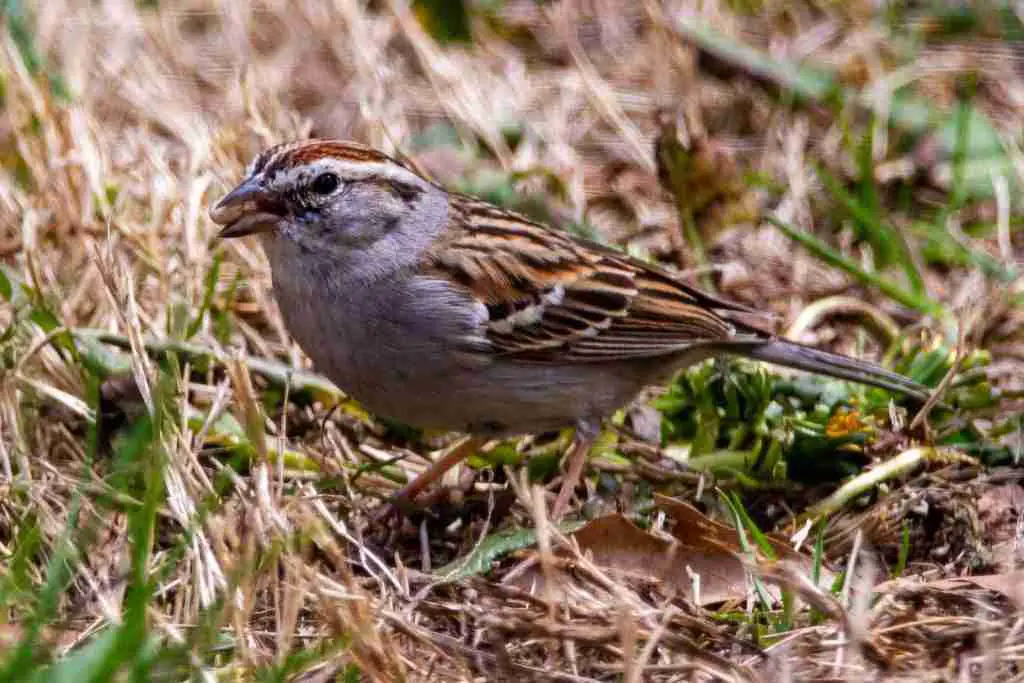
Chipping Sparrows are small sparrows with brown upper parts and streaked grayish-brown underparts. They have rusty caps and white eyebrows. They have a pink bill with a dark base. Chipping Sparrows are found in open woodlands, brushy areas, and grasslands. Their diet consists of insects and seeds. Chipping Sparrows are small birds, measuring about five inches in length.
They have a wingspan of seven to eight inches. Chipping Sparrows are found in South Dakota during the summer months. During this time, they can be seen nesting in trees and shrubs. These birds are not shy and will often approach humans. Chipping Sparrows are interesting little birds that are fun to watch.

House Sparrow
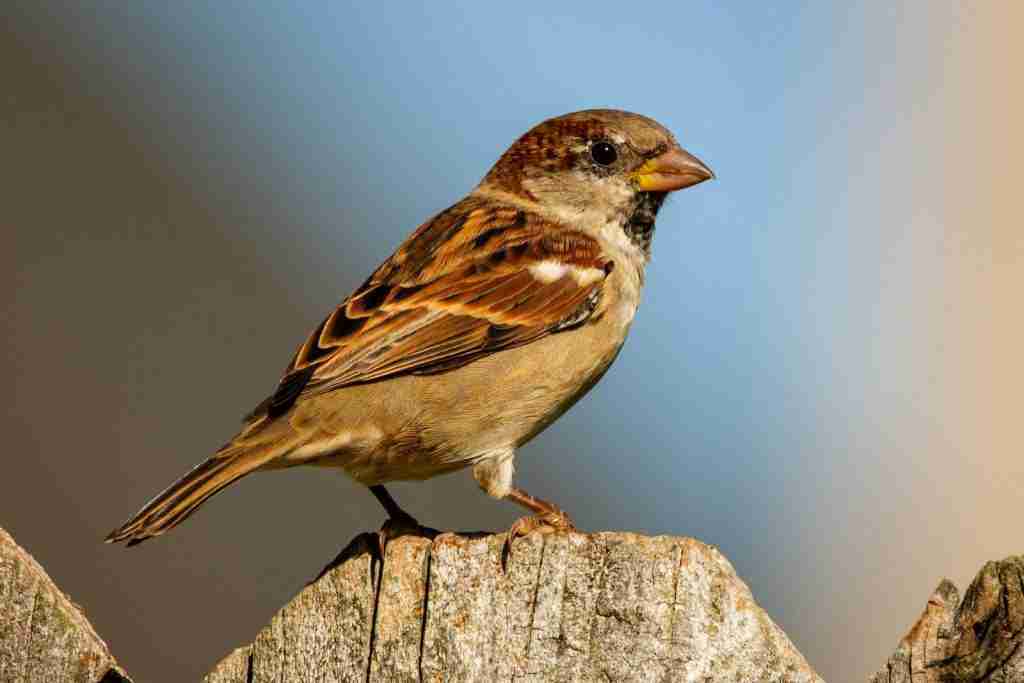
House Sparrows are small birds with brown upperparts and gray underparts. They have a white throat and breast, and a black patch on each cheek. The bill is short and stout, and the wings are rounded. House Sparrows are found in urban areas, farmlands, and open woods. They eat seeds, insects, and berries. House Sparrows are about six inches long.

Song Sparrow
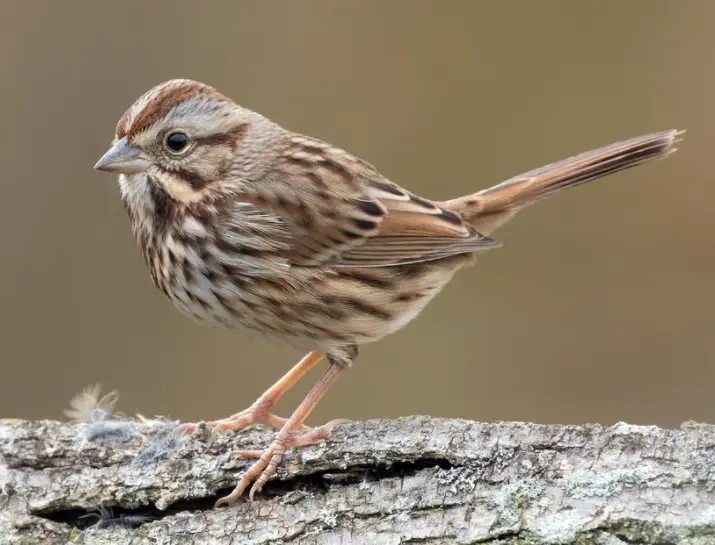
Song Sparrows are one of the most widespread birds in North America. They can be found in nearly every habitat, from forests to deserts. Song Sparrows are small birds, with brown upperparts and streaked grayish-brown underparts. Their breast is usually pale with a dark central spot.
Song Sparrows eat mostly insects and seeds. During the breeding season, they feed their young mostly insects. Song Sparrows build cup-shaped nests made of grasses, leaves, and other plant materials.
Song Sparrows are territorial birds. During the breeding season, males will sing to defend their territories from other males. Females also defend their nesting sites from other females.

House Finch
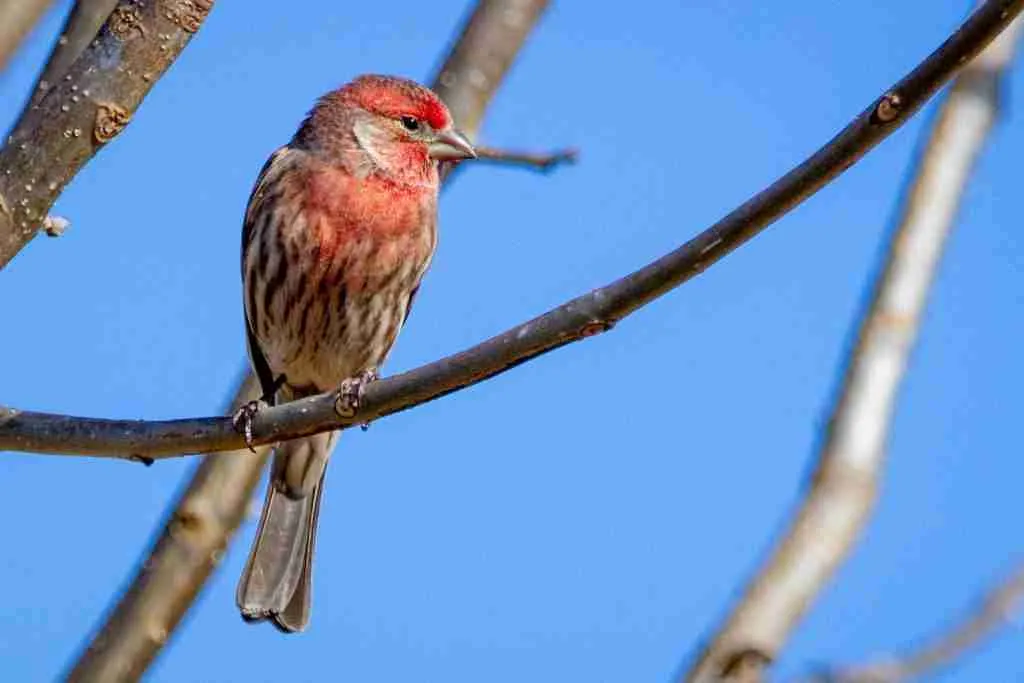
The house finch is a small bird with a red head and breast. The back and wings are brown or gray. They have a white belly and black streaks on their sides. Male house finches also have a red band across their eyes. These birds are about the same size as a sparrow.
House finches eat seeds, berries, and insects. They live in forests, fields, and gardens. House finches build nests out of twigs, grasses, and feathers. The female lays three to six eggs in the nest. Both parents take care of the young birds.
House finches are found across North America. In the winter, they sometimes come to backyard bird feeders. These birds are also known as Linnaeus’s finches and strawberry finches. House finches were once only found in western North America. But in 1940, some of these birds were brought to New York City to be sold as pets. They escaped and now live all across the eastern United States too.

American Crow
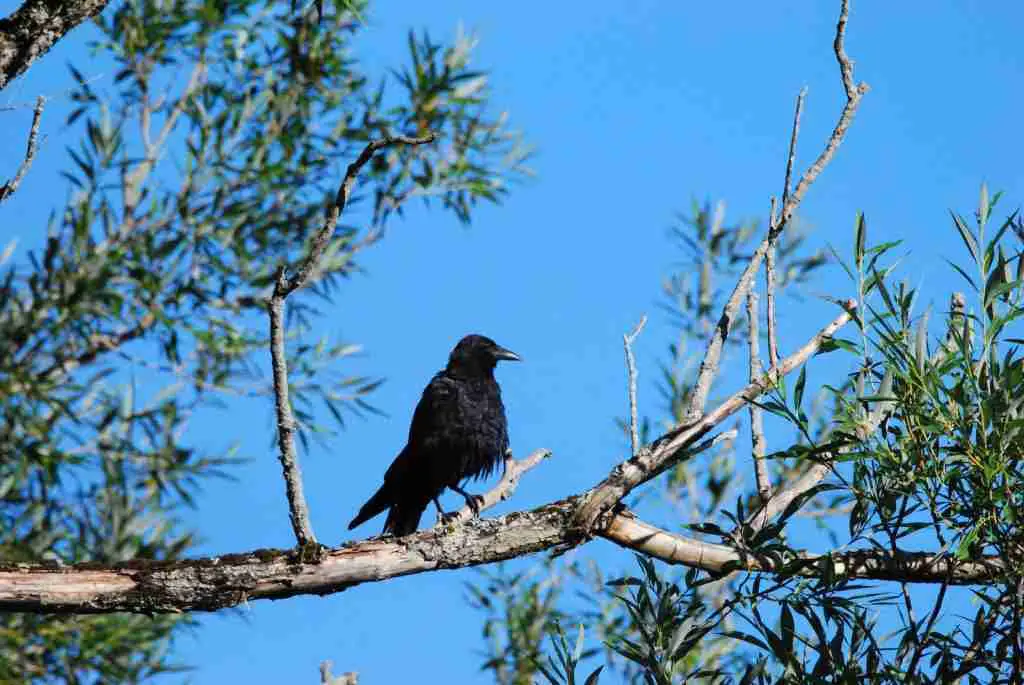
American Crows is a species of bird that can be found in South Dakota. They are known for their brown and white plumage, as well as their red eyes. American Crows typically eat insects and seeds. They are about the same size as a robin and can be found in open woodlands and fields. American Crows are social birds that often travel in flocks. They are also known for their loud calls, which can often be heard during the day.

What kind of birds are in the Black Hills?
The Black Hills are home to many different kinds of birds, including eagles, hawks, and owls. There are also a variety of smaller birds that can be found in the area, such as sparrows, finches, and chickadees. No matter what type of bird you’re looking for, you’re sure to find it in the Black Hills. So come on down and enjoy the beauty of nature!
What birds stay in South Dakota in the winter?
There are many different types of birds that stay in South Dakota during the winter months. Some of the most common include the American Goldfinch, Common Redpoll, Hoary Redpoll, and Pine Siskin. These birds typically stay in the state from October through March. While they are here, they can be found in a variety of habitats including open fields, woodlands, and even urban areas. The American Goldfinch is the state bird of South Dakota, so be sure to keep an eye out for these beautiful creatures during your winter stay!
What kind of game birds are in South Dakota?
Pheasants are the most popular game bird in South Dakota, followed by ducks and geese. Other popular game birds include doves, grouse, quail, and sharp-tailed grouse. South Dakota is also home to a variety of non-game birds, including pelicans, eagles, hawks, and owls.
Whether you’re a seasoned hunter or a first-time birdwatcher, South Dakota is sure to have the perfect avian adventure for you!
What is the bird of South Dakota?
The bird of South Dakota is the ring-necked pheasant. The state bird was adopted in 1943. It is a member of the family Phasianidae and is native to Asia. The males are easily distinguished by their bright plumage and long tail feathers. The females are much duller in coloration. Pheasants are hunted for sport and food. They are also kept as poultry.

An avid ornithologist, zoologist and biologist with an unwavering passion for birds and wild animals.
Dr. Wilson’s journey in ornithology began in childhood and led him to obtain a Ph.D. in Ornithology from the prestigious Avian Research Institute. He has worked closely with renowned experts in the field and conducted extensive research and field studies globally.

